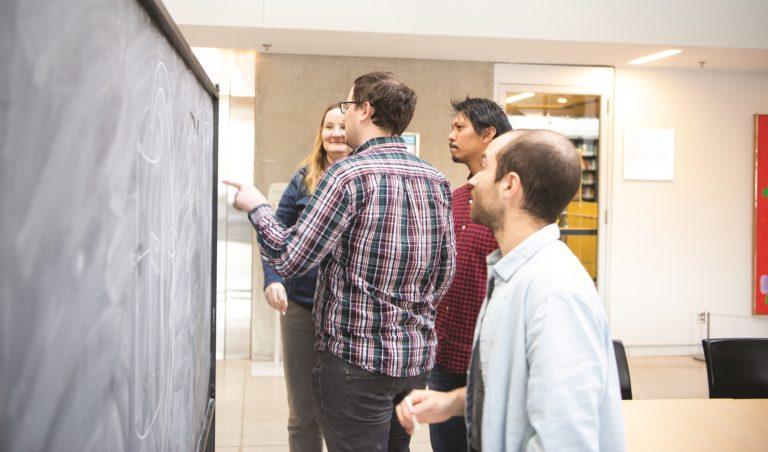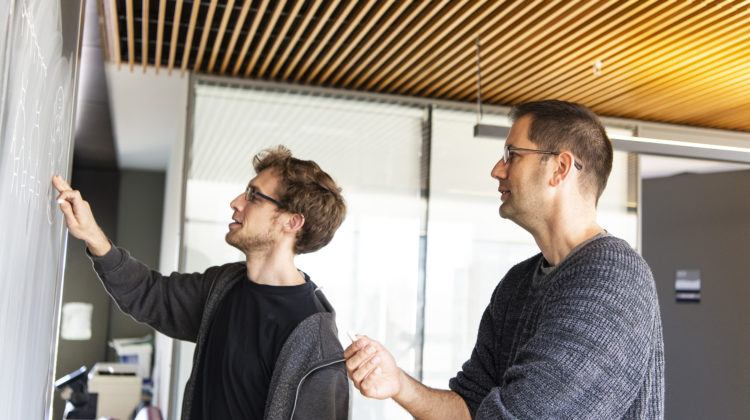Unpicking holography to work out how the universe is made
Perimeter researchers have turned holography inside-out to better understand how it’s put together.

Since it was first proposed in 1997, holography has emerged as an extremely powerful scientific tool that enables researchers to transpose complex theories from one area of physics into something more manageable in another.
But while scientific practice shows that this works, why it does so remains something of a mystery. Researchers at Perimeter recently inched closer to an answer to that deeper question by studying a specific question about gravity.
When physicists talk excitedly about holography, they don’t mean ghostly projections of deceased singers or the little dove on your Visa card. In physics, holography is a tool or a bridge linking a pair of theories that appear to be completely unrelated. Physicists can use that bridge to transfer problems one realm of physics to another.
Most often, the two theories linked together by the holographic bridge are a theory of gravity and a quantum field theory. Thanks to holography, a gravitational theory in four-dimensional space (and its fiendishly complex mathematics) can be translated into a more tractable three-dimensional quantum field theory that is, in essence, sketched out on the surface of that space. As with a hologram, one dimension gets subtracted without losing any information.
Usually, holography applies to a special kind of spacetime known as anti-deSitter space (or AdS), and the surface on which the holograph is printed (or, more accurately, the surface that contains the quantum field theory) is infinitely far away. That’s a bit of a challenge, though, as one usually wants to know about how gravity is behaving up close.
In 2016, Perimeter Faculty member Bianca Dittrich and then-postdoc Valentine Bonzom showed that holography could also be used in more generic, three-dimensional spacetimes with finite – aka “closer up” – boundaries.
Now, Dittrich and a new team have extended that research. She and postdoctoral researcher Aldo Riello, visiting fellow Etera Livine, and PhD student Christophe Goeller worked together to investigate just what kinds of finite boundaries might work, and what the hologram printed on those boundaries might look like.
They worked with an established theory of quantum gravity in three dimensions – two dimensions of space and one dimension of time – and then selected different finite boundaries. (The hologram for such a theory would be a 2D statistical model, printed on a 2D surface such as a hollow sphere or a hollow donut-shaped torus.)
To their surprise, the team found a whole class of different (or at least different-looking) 2D statistical models, depending on the surface chosen. It’s the first study to find many different 2D dual models for a single 3D theory of gravity.
The research gave a fresh look to the established 3D gravity theory and opened a new path of research for mathematicians who might be interested in comparing the various 2D statistical models, looking for equivalences. In the future, the team wants to learn more about the relationship between their choice of boundary wavefunctions and the 2D statistical models generated.
But the real payoff was that, by learning to embed different 2D quantum surfaces in 3D space, the team learned about holography itself. It’s a bit like teaching yourself sewing by turning a shirt inside-out in order to work out the pattern.
The team’s ultimate and elusive goal is to stitch up a quantum gravity fit for our 4D universe. Since holography is powerful, learning more about how holography works at a more fundamental level may well prove powerful too.





















































































